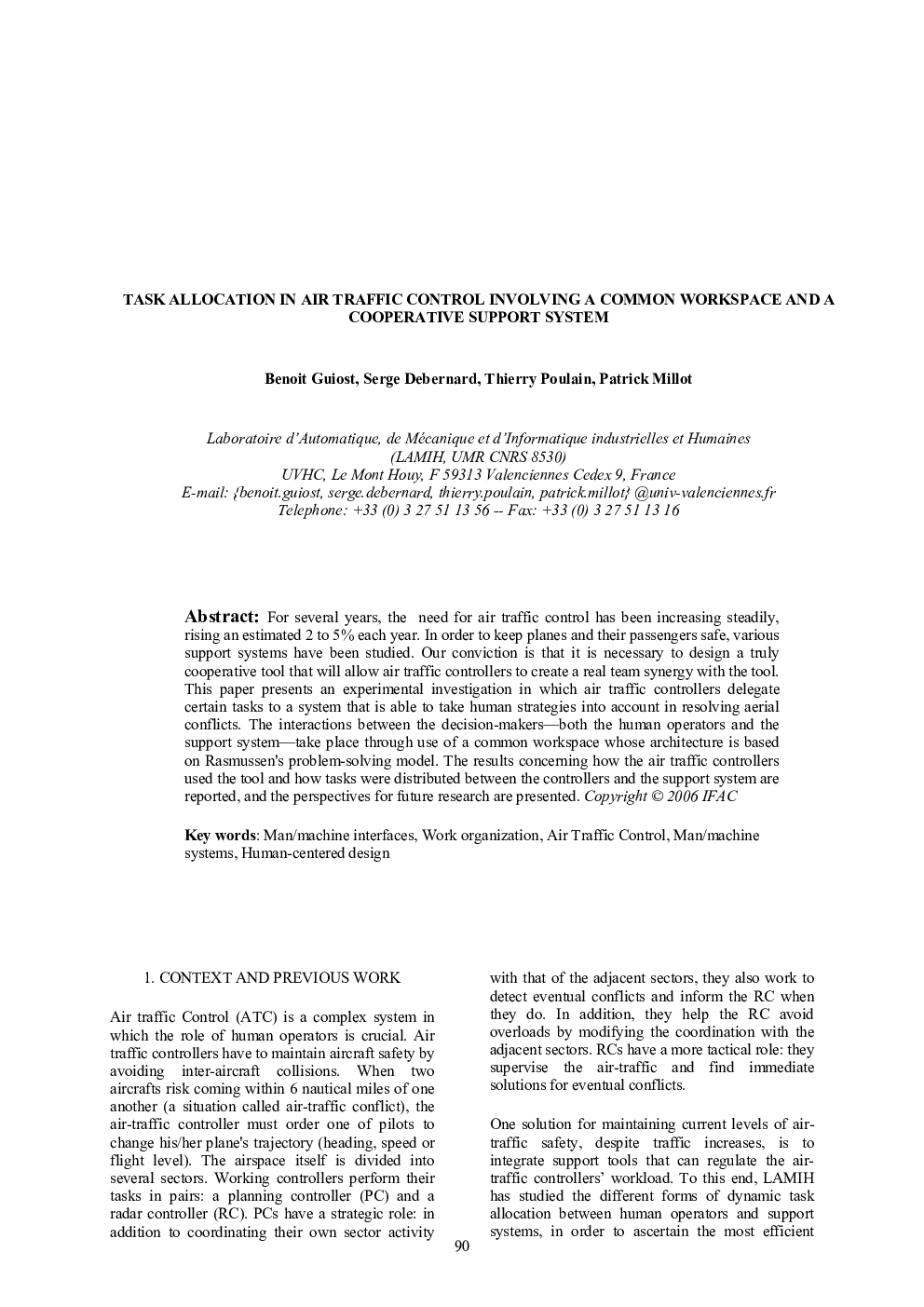| Article ID | Journal | Published Year | Pages | File Type |
|---|---|---|---|---|
| 723116 | IFAC Proceedings Volumes | 2006 | 7 Pages |
For several years, the need for air traffic control has been increasing steadily, rising an estimated 2 to 5% each year. In order to keep planes and their passengers safe, various support systems have been studied. Our conviction is that it is necessary to design a truly cooperative tool that will allow air traffic controllers to create a real team synergy with the tool. This paper presents an experimental investigation in which air traffic controllers delegate certain tasks to a system that is able to take human strategies into account in resolving aerial conflicts. The interactions between the decision-makers—both the human operators and the support system—take place through use of a common workspace whose architecture is based on Rasmussen's problem-solving model. The results concerning how the air traffic controllers used the tool and how tasks were distributed between the controllers and the support system are reported, and the perspectives for future research are presented.
